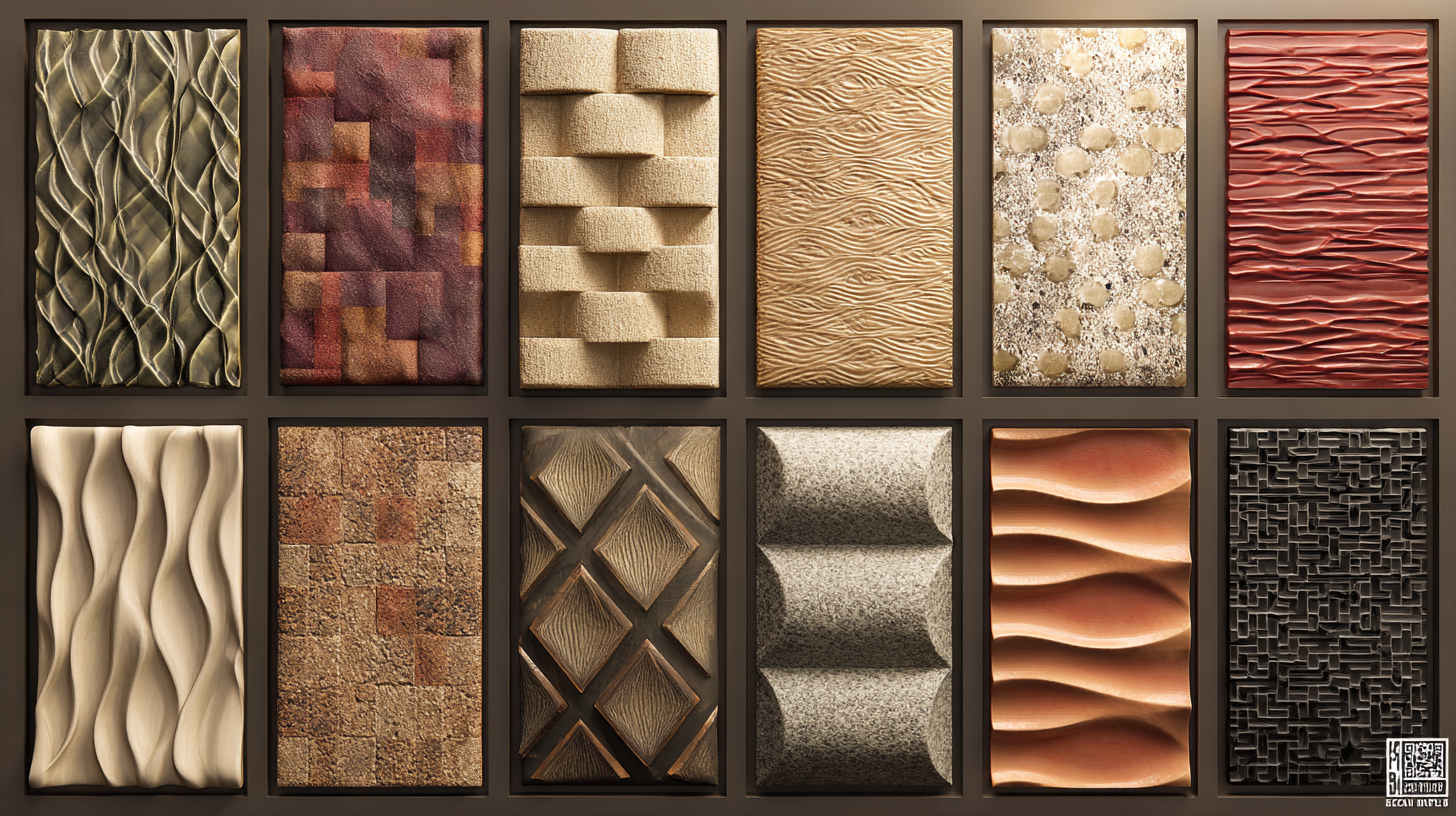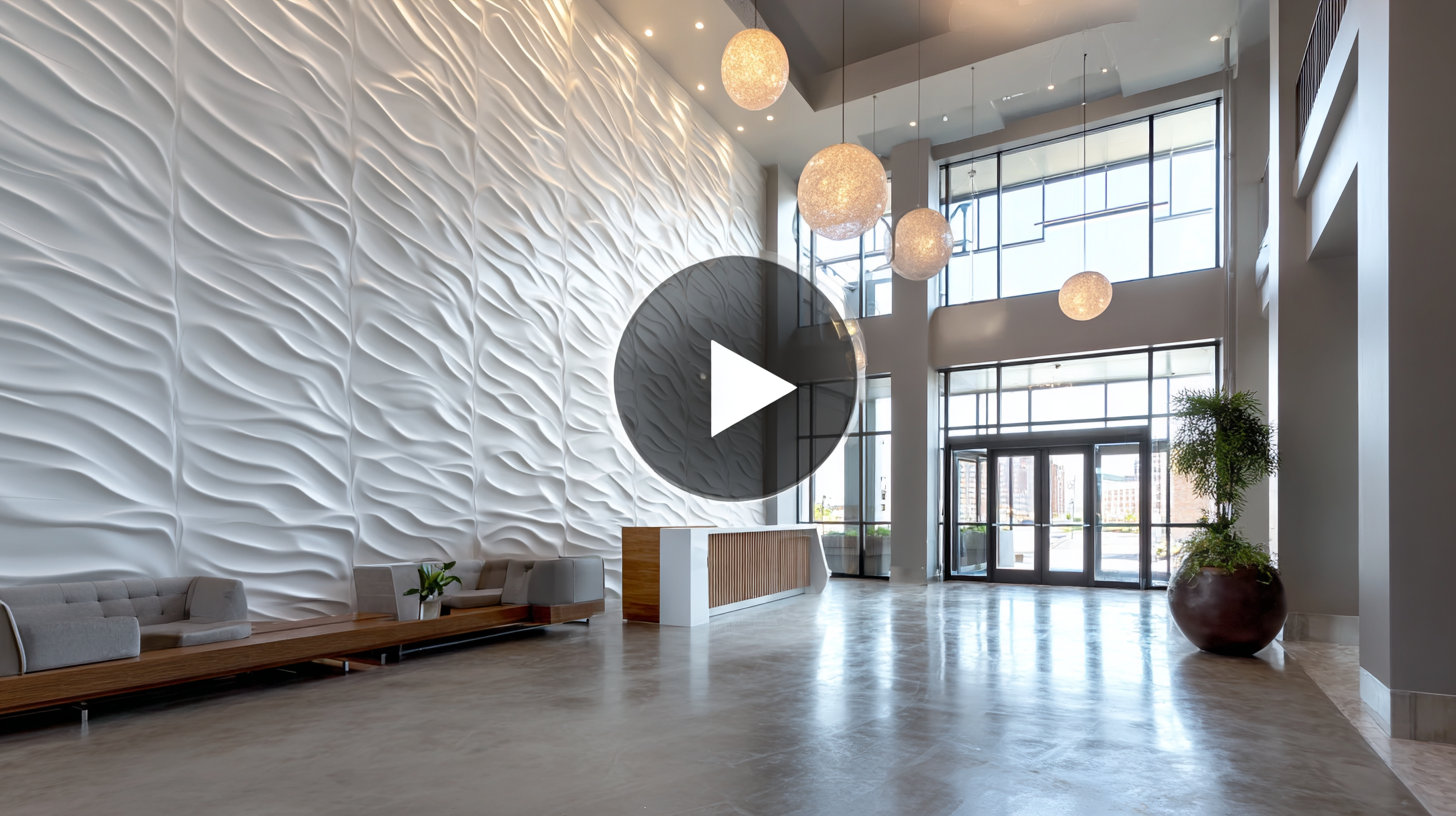As the demand for innovative and eco-friendly building materials continues to rise globally, Fiber Wall Panels have emerged as a key player in enhancing interior spaces. According to a recent industry report by Smithers Pira, the global market for interior wall panels is projected to reach $9.5 billion by 2026, with fiber-based solutions gaining popularity due to their versatility, durability, and aesthetic appeal. These panels not only offer environmental benefits, being made from sustainable resources, but also provide superior insulation and soundproofing qualities.

As China expands its footprint in the global market, high-quality Fiber Wall Panels represent a significant opportunity for industry players seeking to deliver value-driven design solutions. By adopting advanced manufacturing techniques and adhering to international standards, Chinese manufacturers can position themselves as leaders in the fiber wall panel sector, thus catering to the growing international demand for stylish and sustainable interior design options.
As we look towards 2025, the landscape of interior design is poised for a significant transformation, with fiber wall panels leading the charge. These panels not only offer aesthetic appeal but also bring a range of innovative features to the forefront. Expect to see a surge in sustainability, with manufacturers increasingly utilizing recycled materials that not only enhance the look of a space but also contribute to eco-friendliness. Textured finishes and 3D designs are trending, inviting tactile interaction while creating stunning visual effects.
Tip: When choosing fiber wall panels, consider your space's lighting and purpose. Panels with reflective surfaces can brighten a dark room, while softer textures can create a more intimate atmosphere.
Another defining trend is customization, allowing homeowners and designers to create unique wall art solutions that reflect personal style. Advanced printing technologies will enable detailed patterns and colors, offering endless possibilities for personalization. Additionally, as technology integrates deeper into design, look for panels equipped with smart features such as built-in lighting or sound absorption.
Tip: Don’t shy away from bold colors and patterns. Mixing different textures and hues can stimulate interest and elevate your interiors, transforming them from ordinary to extraordinary.

When selecting the right fiber wall panel for your space, it's essential to consider not only aesthetics but also functionality and durability. A recent report by the Freedonia Group indicates that the fiber board market is projected to grow by 5.4% annually, highlighting the increasing demand for high-quality, sustainable materials in interior design. This surge is largely driven by the rise in eco-conscious consumerism, as fiber wall panels made from recycled materials are not only environmentally friendly but also offer superior acoustic properties and thermal insulation.
Another critical factor to evaluate is the maintenance requirements of different fiber wall panels. According to data from the National Association of Home Builders, homeowners increasingly prioritize low-maintenance solutions, with 60% stating they would choose materials that require minimal upkeep. Fiber wall panels boast resistance to moisture, mold, and mildew, making them an ideal choice for various environments, including kitchens and bathrooms. By assessing these factors, you can ensure your fiber wall panel choice aligns perfectly with your design vision and functional needs.
Fiber wall panels have come a long way from their traditional applications, offering innovative solutions that redefine interior spaces. These versatile panels come in a variety of textures, colors, and finishes, making them suitable for an array of aesthetic needs. Beyond acting as mere wall coverings, fiber panels can serve functional purposes, such as enhancing sound absorption in commercial spaces or improving insulation in residential settings. Their lightweight and durable nature allows for easy installation, encouraging creative design choices that integrate aesthetics with practicality.
Moreover, fiber wall panels are increasingly being used in unconventional ways. For instance, they can transform ceilings into visually striking elements, creating a seamless flow in open-concept areas. In addition, their eco-friendly properties, often derived from recycled materials, make them an attractive option for sustainable design. Various industries, from hospitality to retail, are leveraging fiber wall panels to create unique, immersive environments that captivate consumers. By thinking outside the box, designers can harness the full potential of fiber wall panels, pushing the boundaries of what interior design can achieve.
| Aspect | Description | Innovative Uses | Advantages |
|---|---|---|---|
| Material Type | Natural fibers, recycled fibers, synthetic blends | Acoustic treatments, eco-friendly designs | Sustainability, sound absorption |
| Design Versatility | Available in various textures and colors | Custom wall art, interactive installations | Aesthetic enhancement, personalization |
| Installation Method | Paneling, glue, or modular systems | DIY projects, quick renovations | Cost-effective, reduced labor time |
| Durability | Resistant to moisture and wear | High traffic areas, outdoor applications | Long lifespan, less frequent replacements |
| Maintenance | Simple cleaning with dry or slightly damp cloth | Repurposing in new environments | Affordable upkeep, minimal effort required |
Sustainable design has become a vital aspect of modern interiors, and fiber wall panels offer an excellent solution for eco-conscious homeowners and designers. Made from renewable resources, such as recycled paper, bamboo, and other natural fibers, these panels provide a stylish and environmentally friendly alternative to traditional wall coverings. By choosing fiber wall panels, you not only enhance the aesthetic appeal of your spaces but also contribute to reducing your carbon footprint.
Incorporating eco-friendly fiber wall panels into your interiors can significantly impact indoor air quality. Many of these panels are free from harmful chemicals and VOCs (Volatile Organic Compounds), creating a healthier living environment. Their natural properties allow for improved sound absorption, making them an excellent choice for spaces where noise reduction is essential, such as offices and home theaters. With a variety of designs and finishes available, fiber wall panels can seamlessly fit into any interior style while promoting sustainability at the same time.
When it comes to creating a cohesive interior look, fiber wall panels can serve as a stunning backdrop that harmonizes with various design elements. Their versatility allows them to be integrated effortlessly into different styles, from modern minimalism to rustic charm. To enhance the overall aesthetic, consider pairing fiber wall panels with complementary materials such as wood, metal, or fabric. For instance, using wooden furniture or fixtures alongside fiber panels can add warmth and create a balanced atmosphere, while metal accents can provide a contemporary edge.

Tip: When combining fiber wall panels with other elements, focus on a consistent color palette to unify the look. Selecting panels that share similar tones with your existing furnishings can help maintain visual continuity throughout the space. Additionally, incorporating textiles like cushions or drapes that echo the texture or hue of the fiber panels can elevate the design further.
Another effective strategy is to use fiber wall panels as a statement piece within a gallery wall. By layering artwork or decor items that complement the panel’s texture, you can create dynamic visual interest. Be mindful of the scale and proportion of your art pieces to ensure they harmonize with the fiber panels, adding depth without overwhelming the design.
